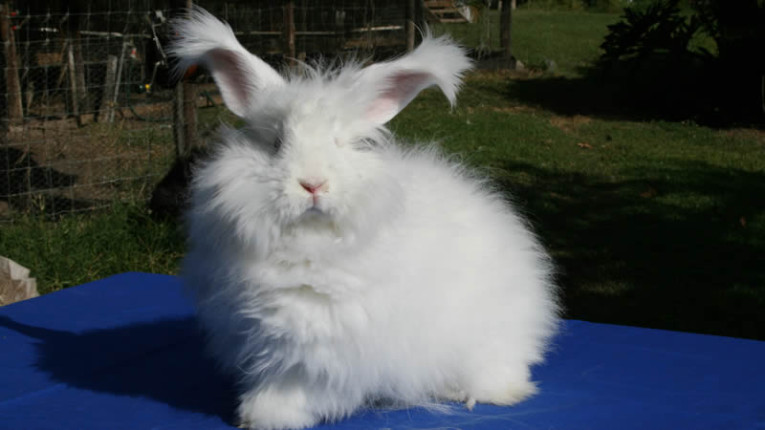Our biggest problem that we face when breeding rabbits is that we are very hot for long periods of the year. Breeders in coastal areas have the added problem of dealing with the humidity. Rabbits enjoy temperatures of about 18 degrees to about 24 degrees. Anything over that is going to cause discomfort, temporary sterility in males, re-absorption of litters in females, and finally when our temperatures go over 35 degrees, pregnant does will die and litters will suffocate in the nest boxes. – Right, so these are all the horror stories, but that does not mean you cannot keep rabbits!!!
Sensible housing is your first option. Do not go for the wooden hutches used in Europe and England, these are much too hot for our conditions, and also encourage fly strike. Use an all wire cage, with a mesh too small for predators. Keep it brushed clean of loose hair especially while rabbits are moulting, so that there is constant air movement. Place hutches under trees, but ensuring that there is adequate air flow. And finally, a 2l bottle of frozen water placed in the cage can always be leaned against or draped over to drop temperature. I keep this in reserve, and have only had to go to these extremes two or three times in 24 years of rabbit breeding.
When cooler weather comes, the cage can be covered and filled with hay for the rabbit to burrow into and keep warm. If you have a few rabbits, you can even create a large walk in shed, with the sides consisting of wire, and a solid roof in which you place the individual cages – this is to protect them from predators. Always remember that your rabbit is at the bottom of the food chain, and will be attacked by any predatory animal that comes into contact with it. This could include your own pets when you are not there to supervise- do not take chances, but always cage when you are not present.
House pet rabbits will often find a nice cool area of tiles to stretch out on when hot weather comes, but please do always remember that they love to eat plastic, and this includes electrical and telephone cables – keep these out of reach, and once again do not leave uncaged when you are not there to supervise.
This brings us to the question of why cage, why not keep the rabbits in a large colony when they can live a “free” life. Firstly, we do not need escapees to destroy our fragile eco-systems as they did in Australia – rabbits are burrowers who will go a meter or more down to get out of an enclosed area.
We can never reproduce the natural size of area that rabbits would live in. In the wild, excess males can leave a colony and move on when they become persecuted. I have often had very badly hurt rabbits offered to me from colony situations, and have become very anti this method of keeping rabbits. Quite frankly I feel that it is just someone who is too lazy to give their rabbits individual care who will use this method of rabbit keeping!!
Yes it is a lot of work to keep rabbits caged individually, but they are territorial animals, and like to have their own place and space. In colony situations there are fights over space, food and mates, and because it is in a confined area, the rabbits cannot escape from the bullies.
Of course if you are a serious breeder, then you wish to keep track of the pedigrees of your stock, and the only way to do this is to ensure that you know to whom they were bred and when. This is also the only way to improve stock and ensure the purity of your breeds. Every rabbit is housed individually, and all breedings and care are kept track of.
